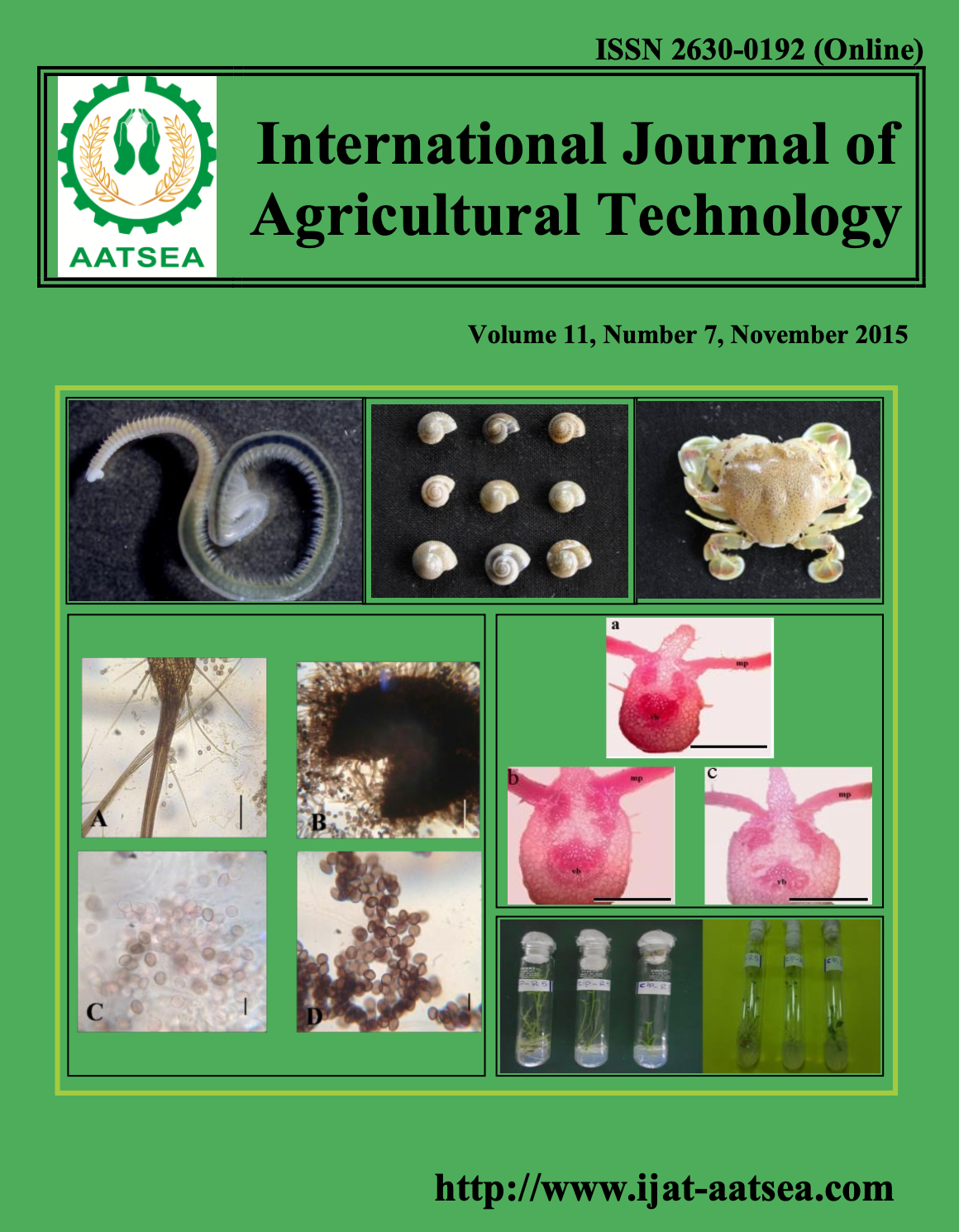Microsatellite loci heterozygosity and fitness correlations among three genetic groups of domesticated mallard ducks (Anas platyrhynchos domesticus L.) in the Philippines
Main Article Content
Abstract
The relationships between the degree of multi-loci heterozygosity in the Philippine Mallard, Khaki Campbell, and the Pekin duck populations based on 21 polymorphic microsatellites and the bodyweight, breast depth, breast width, keel length, and shank length at maturity were determined. The multi-loci heterozygosity was highest in the Pekin with 0.3985 followed by that of the Khaki Campbell and Philippine Mallard with 0.3077 and 0.2711, respectively. In addition, significant correlations were detected between the microsatellite loci heterozygosity and bodyweight at maturity (r = 0.468), breast width (r = 0.410), breast depth (r = 0.443) and keel length (r = 0.449) of the mallard ducks in an overall population basis. This suggests that the individual performance potential of the ducks in these traits could be ascertained early in their life based on the degree of their individual heterozygosity by employing linear regression analysis.
Article Details

This work is licensed under a Creative Commons Attribution-NonCommercial-NoDerivatives 4.0 International License.
References
Bierne, N., Tsitrone, A. and David, P. (2000). An inbreeding model of associative overdominance during a population bottleneck. Genetics 155:1981-1990.
Bondoc, O. L. (2008). Animal Breeding: Principles and Practice in the Philippine Context. Philippines: The University of the Philippines Press.
Bourdon, R. M. (1997). Understanding Animal Breeding. USA: Prentice-Hall.
Chang, H., Dagaas, C., de Castro, N., Ranola, R., Lambio, A. and Malabayabas, M. L. (2003). An Overview of the Philippine Duck Industry. Contributed paper presented to the 47th Annual Conference of the Australian Agricultural and Resource Economics Society. Retrieved from http://ageconsearch.umn.edu/bitstream/57842/2/2003_chang1.pdf.
Coltman, D. W., Bowen, W. D. and Wright, J. M. (1998). Birth weight and neonatal survival of harbour seal pups are positively correlated with genetic variation measured by microsatellites. Proceedings of the Royal Society for Biological Sciences 265:1395. pp. 803-809.
Deeden, B. (2005). Development of Selection Indices for Philippine Mallard Ducks (Anas platyrynchos Linn). (Doctor of Philosophy’s Thesis). University of the Philippines Los Banos, College, Laguna, Philippines.
Gosselin, M. L. and Bernatchez, L. (2006). Local heterozygosity-fitness correlations with global positive effects on fitness in threespine stickleback. Evolution 60:1658-1668.
Jiang, X. P., Liu, G. Q. and Xiong, Y. Z. (2005). Investigation of gene and microsatellite heterozygosities correlated to growth rate in the chinese meishan pig. Asian-Australian Journal of Animal Science 18:927-932.
Lambio, A. L. (2009). Prospects for the Development of Ducks for Meat in the Philippines. Paper presented at Pilipinas Shell Professorial Chair Lecture delivered in June, 2009. University of the Philippines Los Banos, College, Laguna, Philippines.
Lambio, A. L. (2010). Duck Production. In: Poultry Production in the Tropics. Edited by A.L. Lambio, UP Campus. Philippines: The University of the Philippines Press. pp. 263.
Liu, G. Q., Jiang, X. P., Wang, J. Y. and Wang, Z. Y. (2006). Correlations between heterozygosity at microsattelite loci, mean d2, and body weight in a chinese native chicken. Asian-Australasian Journal of Animal Science 19:1671-1677.
Wu, X. L., Li, X. and Merete, F. (2001). Association of microsatellite genomic heterozygosity with inbred pig performance under successive inbreeding. Acta Genetica Sinica 28:20-28.


